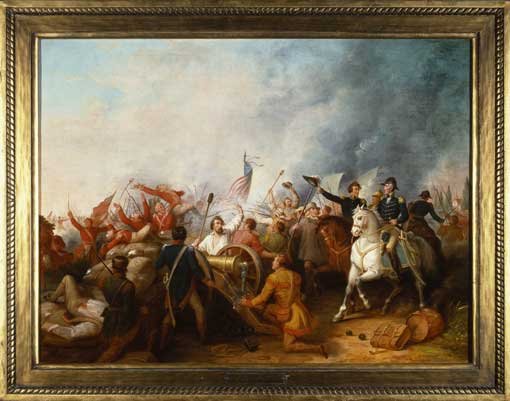Battle of New Orleans
Dennis Malone Carter (1820–1881?)
Oil on canvas, 1856

The Historic New Orleans Collection, Louisiana, 1960.22
The British Gulf Coast campaign was intended to exert leverage in the peace talks or annex important territory. When Andrew Jackson arrived in New Orleans on December 1, 1814, its citizens were prepared to surrender. Jackson’s energy and determination changed the mood. Volunteers rushed to join him: 850 Tennessee riflemen, free blacks and slaves, refugees from Santo Domingo, and even Jean Laffite’s pirates. The British commander Edward Pakenham, an experienced soldier and the Duke of Wellington’s brother-in-law, arrived with additional troops on Christmas Day.
The Battle of New Orleans took place on January 8, 1815, with Pakenham’s 5,300 men advancing on Jackson’s line of 4,700. When the fog lifted, British soldiers were exposed to murderous fire: cannons at 500 yards; rifles at 300 yards; and muskets at 100 yards. Pakenham was killed trying to rally his men, and the British broke off the attack.
